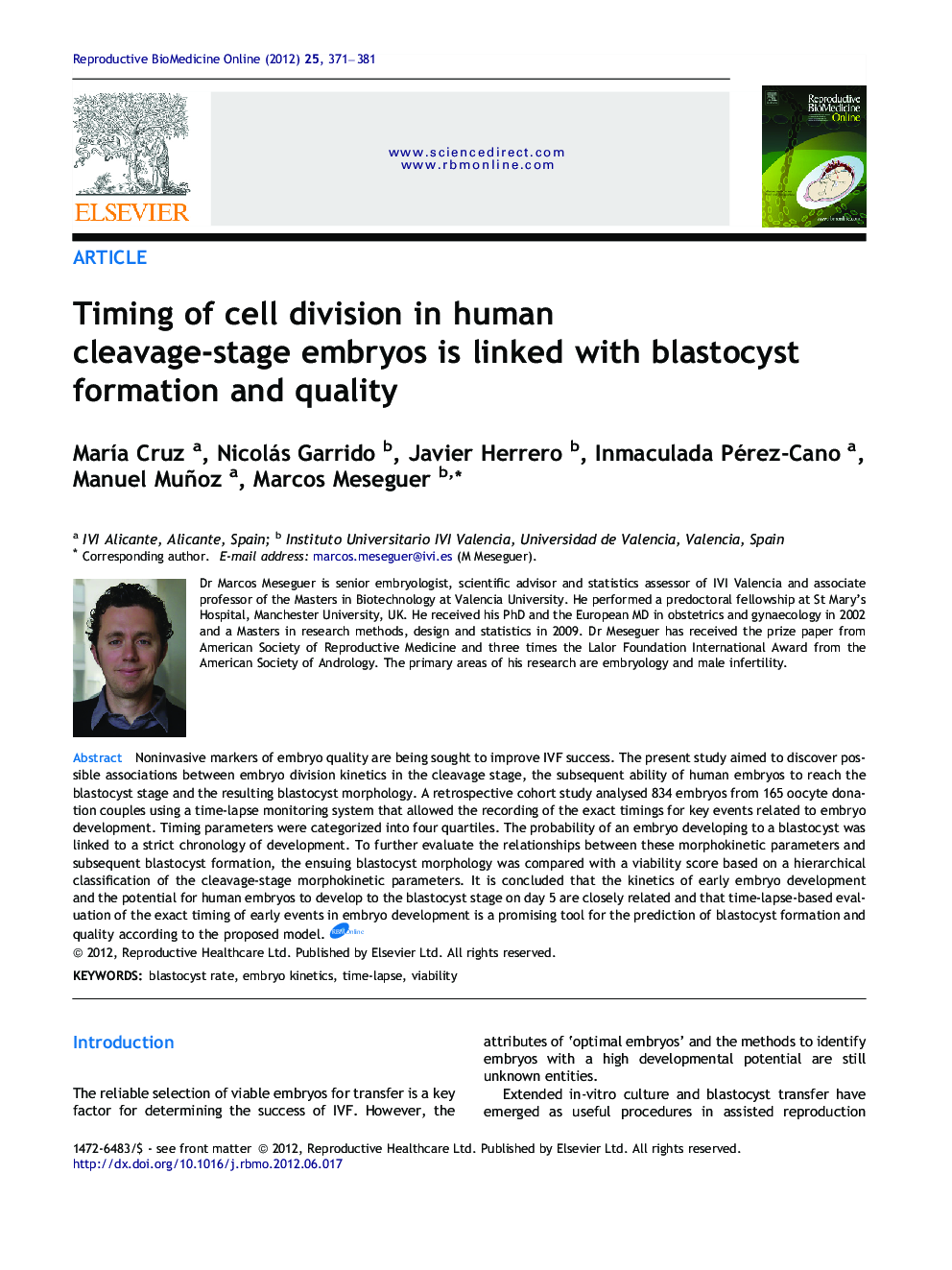| کد مقاله | کد نشریه | سال انتشار | مقاله انگلیسی | نسخه تمام متن |
|---|---|---|---|---|
| 3970538 | 1256730 | 2012 | 11 صفحه PDF | دانلود رایگان |

Noninvasive markers of embryo quality are being sought to improve IVF success. The present study aimed to discover possible associations between embryo division kinetics in the cleavage stage, the subsequent ability of human embryos to reach the blastocyst stage and the resulting blastocyst morphology. A retrospective cohort study analysed 834 embryos from 165 oocyte donation couples using a time-lapse monitoring system that allowed the recording of the exact timings for key events related to embryo development. Timing parameters were categorized into four quartiles. The probability of an embryo developing to a blastocyst was linked to a strict chronology of development. To further evaluate the relationships between these morphokinetic parameters and subsequent blastocyst formation, the ensuing blastocyst morphology was compared with a viability score based on a hierarchical classification of the cleavage-stage morphokinetic parameters. It is concluded that the kinetics of early embryo development and the potential for human embryos to develop to the blastocyst stage on day 5 are closely related and that time-lapse-based evaluation of the exact timing of early events in embryo development is a promising tool for the prediction of blastocyst formation and quality according to the proposed model.Assisted reproduction treatment has helped several thousand infertile couples to start a family. Even though treatment is presently very successful, there is still scope for improvement in the process of selecting the embryos for transfer that have the highest implantation potential. An improved selection procedure may be able to increase the pregnancy rates, or alternatively, to reduce the number of embryos transferred while maintaining high pregnancy rates.We report the results after using an incubator with time-lapse video recording and image analysis to determine the timing of key events during embryo development. The events were assessed as potential markers of embryo morphology and development. One of the major factors that has already helped to increase success rates is extended embryo culture and blastocyst transfer on day 5 of development, because at this stage the embryo has stronger developmental competence. Also embryo/uterine synchrony is better achieved by a blastocyst-stage than a cleavage-stage embryo. However, extended culture in vitro is time consuming and extended exposure to artificial culture conditions in vitro may stress the embryo and could have negative side effects. For that reason, we sought evidence in the data obtained from the time-lapse monitoring system for a link between timing of early embryo cell divisions and the probability of subsequent development of embryos into blastocysts. The purpose of this was to avoid extended culture if blastocyst development could instead be reliably predicted from time-lapse images of the early cleavage states.
Journal: Reproductive BioMedicine Online - Volume 25, Issue 4, October 2012, Pages 371–381